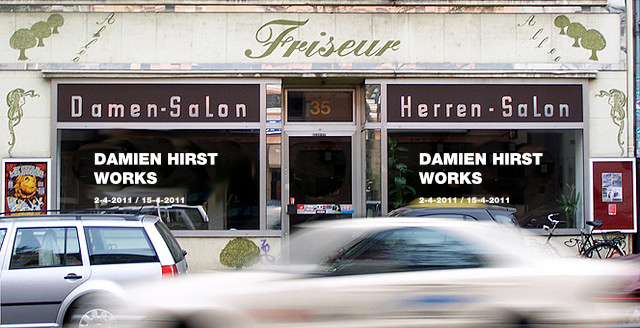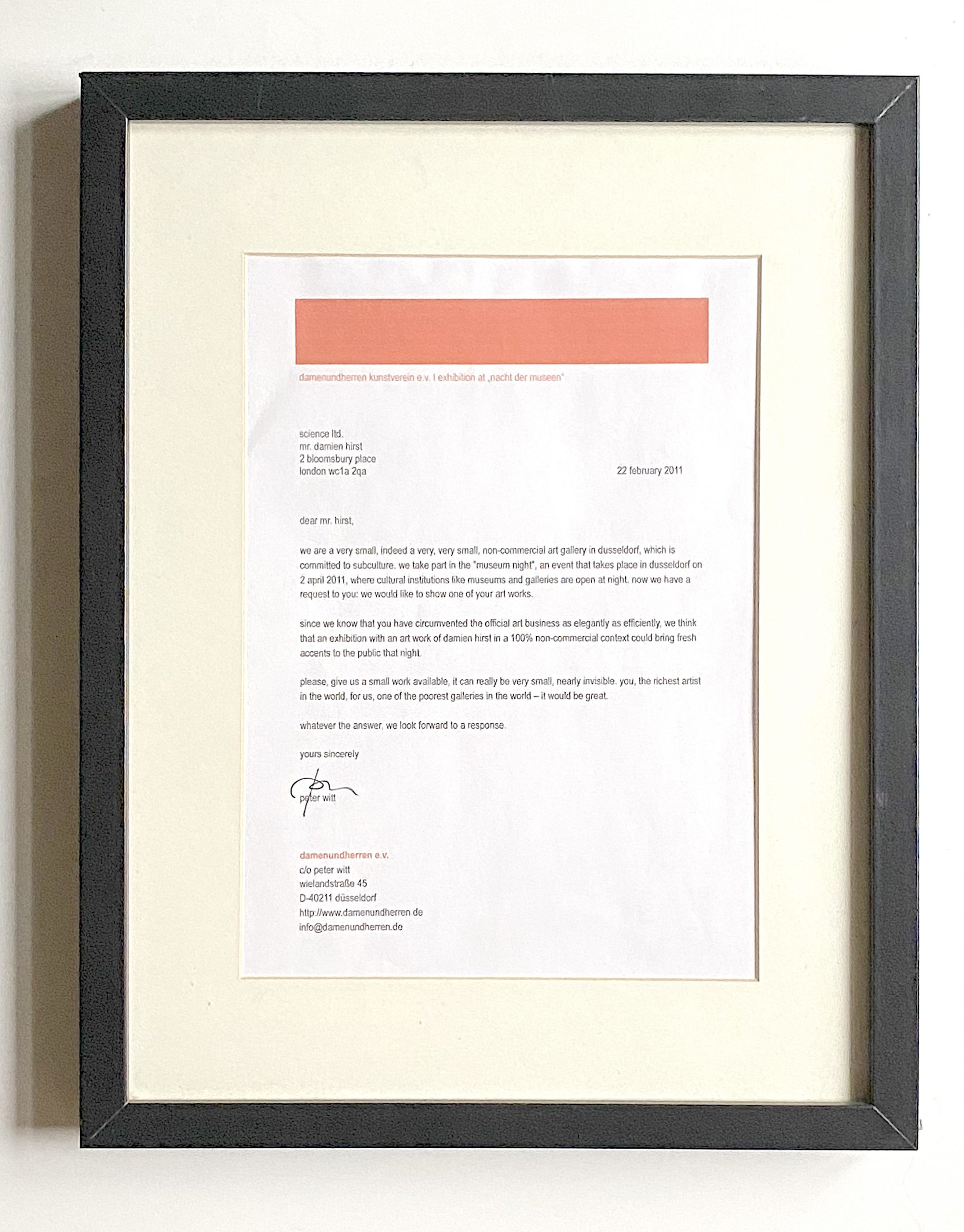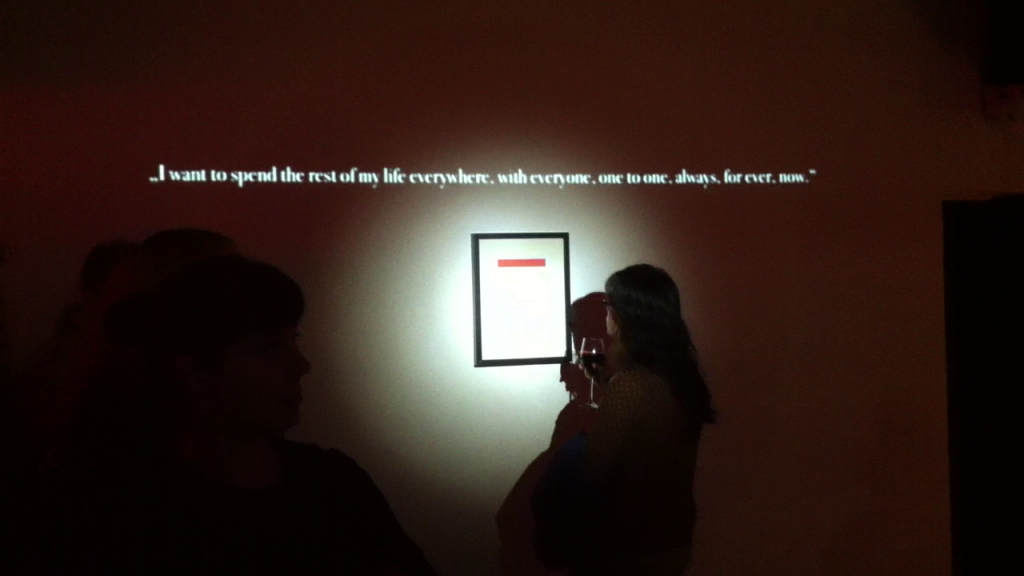damien hirst works
in 2011, the kulturverein damenundherren took part for the second time in the „long night of museums“. at this city-wide event, not only established cultural spaces such as museums open their doors for one evening, but also spaces of the off-scene. especially for this participation, peter michael witt developed an event that ironically questioned the established art scene, ironised familiar mechanisms of the attention economy and sarcastically made use of the public’s willingness to react to big names. the title of the event „damien hirst works“ already points to an ambiguity. of course, no works by hirst were on display, but a letter that peter michael witt had written to damien hirst asking for the loan of a work was exhibited. quotes by hirst were projected over the framed letter. as expected, the exhibition was very well attended, some of the visitors frustrated and angry, most of them amused.
background:
damien hirst is known to be the richest artist in the world, with an estimated wealth of $1 billion. he became famous mainly for provocative sculptures dealing with the themes of life, illness and death. among his most famous works are several animal carcasses preserved in formaldehyde, as well as a diamond-studded human skull titled „for the love of god“.
hirst managed to circumvent the established art market as elegantly as he did efficiently by selling his works himself, targeting russian oligarchs, arab oil sheikhs and american hedge fund managers. a highlight of this marketing strategy was the auction of his works directly from his studio in 2008 with total proceeds of $172 million.
damien hirst commands a small conglomerate of studios, publishers and workshops in the uk and the us, where works are produced according to his instructions.
while hirst’s story serves as a model of successful entrepreneurship for business schools and management seminars, it also draws attention to the peculiar creation and production of value in an art market overheated by speculators.
damenundherren confronted the phenomenon of hirst. subcultural institutions are also part of an attention economy in which cynical and profit-driven exploitation mechanisms have existence-threatening effects on both the production and presentation of culture.
so what does this look like – the richest artist in the world in a very poor gallery?



#conceptart #theartistispresent #konzeptkunst Konzeptkunst